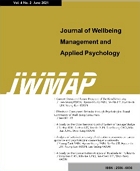 E-ISSN : 2586-6036
E-ISSN : 2586-6036
Yoo-Kyung BOO
Abstract
Purpose: This research aims to facilitate a smooth transition from KCD-8 to ICD-11 through the study of ICD-11. Research design, data and methodology: Skilled Health Information Managers (HIMs) in Korea performed manual mapping and conducted a study of the code structure of ICD-11 chapters 11 and 12. Results: When comparing the granularity between ICD-11 and KCD-8, 58.1% of ICD-11 codes showed higher granularity, and 38.6% had similar granularity. The granularity of the circulatory system was higher than that of the respiratory system. When comparing the KCD-8 codes mapped by ICD-11 with the total 924 KCD-8 codes, it was found that about 50% of KCD-8 codes were not mapped to ICD-11. This means that 50% of diseases in the KCD-8 do not have individual codes as they did in ICD-11. Conclusions: ICD-11 demonstrated high granularity, indicating its effectiveness in describing cutting-edge medical technology in modern society. However, we also observed that some diseases were removed from KCD-8, while others were added to ICD-11. To ensure smooth statistics transition from KCD8 to ICD-11, especially for leading domestic diseases, integrated management, including the preparation of KCD-9 reflecting ICD-11 and ICD-11 training, will be necessary through the analysis of new codes and the removal of codes.
- keywords
- ICD-11, KCD-8, Disease Classification, Concept Mapping, Disease Codes
- Downloaded
- Viewed
- 0KCI Citations
- 0WOS Citations













